How to Plant Leeks in the Garden
Learn how to plant leeks so you can harvest big beautiful leeks in the fall.
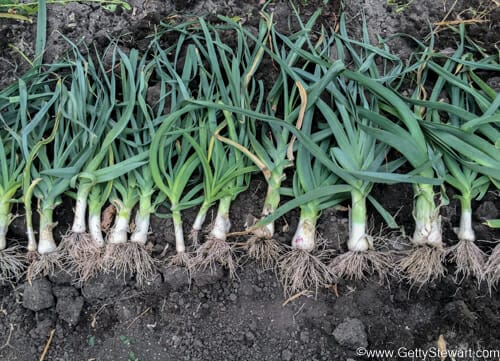
What Are Leeks?
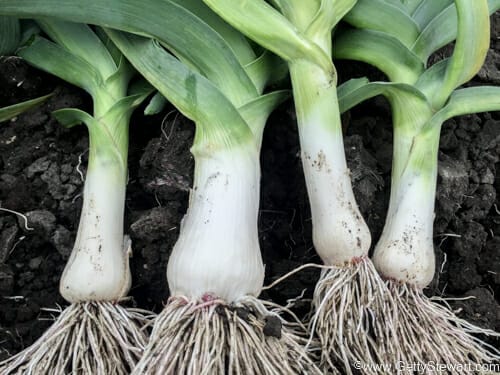
When growing leeks the goal is to grow a long white stalk. To do so, plant your leeks deep and over the course of the growing season, hill soil around the leeks to blanch (make them turn white) the stalks as they grow. If you don’t hill the soil, you’ll still get awesome leeks, the tasty white stalk just won’t be as long.
Leeks are a cool climate, hardy vegetable that enjoy as much sunlight as they can get. Our Zone 3 northern prairie garden is ideal for planting early in the spring and harvesting late in the fall (they need about 110-150 growing days). Early in the spring means up to four weeks before the last frost free date or pretty much as soon as the soil is workable. Here in Manitoba, that means we can plant leeks anytime after April 20 or there abouts.
In warmer climates where the ground doesn’t freeze solid, leeks can be harvested well into the winter. In fact, in warmer climates, leeks are often planted in the fall and harvested in the spring.
How and When to Start Leek Seeds
Leeks need 110-150 days to fully mature (about the length of our Manitoba growing season), so you’ll want to start seeds indoors sometime in March.
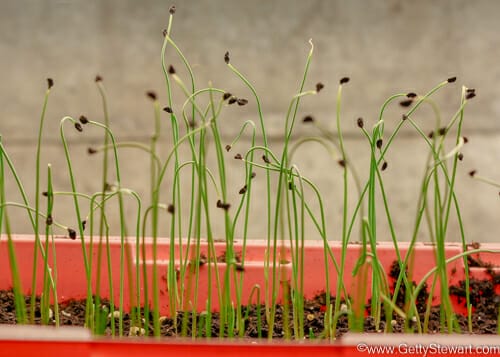
When to Start Seeds Indoors:
Early to Mid March (8-10 weeks before first frost free day)
How to Start Seeds:
Plant seeds 1/2″ deep in a tray or individual pots
Thinning & Trimming:
Thin seedlings by removing the weakest ones to give larger ones room to grow.
Trim leek greens when they’re 4 inches tall. Use scissors to cut the greens back so they’re 2 inches tall. Repeat as needed.
Hardening:
About a week before you plant them outside, expose seedlings to the outdoor environment by placing them outside for a few hours every day and extending that time each day.

When and How to Plant Leeks in the Garden
As soon as the soil is workable and night time temps don’t dip below -6°C (20°F) you can transplant leek seedlings outdoors. In Zone 3, I don’t recommend starting seeds outdoors, the growing season just isn’t long enough to get nice thick stalks. I usually plant mine somewhere between April 20 and May 5 depending on temperature and soil condition.
Plant in full sun in soil that has a lot of compost and drains easily. If you have heavy, clay soil loosen it well and add compost. For heavier soils, the trench method may be best as it loosens more soil.
Separate Roots:
Each seedling has to be planted separately. If the root mass doesn’t separate easily, dip it in water to wash away the soil.
 Dig Deep:
Dig Deep:
You can either dig a deep trench or make individual holes 6 inches deep. That’s pretty deep for these tiny seedlings, but this helps with getting long white necks and prevents roots from drying out too easily. Also, you’re not going to fill in the trench or holes right away. You will fill them in over the course of the growing season as the plants mature. This will allow the stalks to be blanched – remember our goal is long white necks.
Spacing:
Place seedlings 6-8 inches apart to give them plenty of room to grow big and wide. Smaller spacing will lead to skinny leeks. I marked the back of my digging tool with tape to mark the 6 inches so I’d have an easy way to keep track of my spacing.
Tiny Leeks, Deep Planting:
A 6 inch hole or trench for a 3 inch seedling looks insane! If you were to fill in the hole or trench with dirt on planting day, you’d bury the seedlings to death. Don’t fill in the hole or trench! Have a look at the photo below. Notice the exposed roots on the right and the covered roots on the left.
On planting day, you want to cover the roots of your seedlings and up to the base of the first leaf. The rest of the hole or trench will get filled in through natural erosion when it rains or when you fill it with a hoe as the leeks grow. When you’re finished planting, your leeks will look a little like this.
Watering:
Leeks enjoy consistent soil temp and watering. I’m a slouch when it comes to watering consistently, so planting deep helps a lot.
Weeding:
Remove any competition for water and nutrients.
Harvesting:
You can harvest leeks here and there throughout the summer right up until the snow flies. I will typically save the big harvest for late fall.


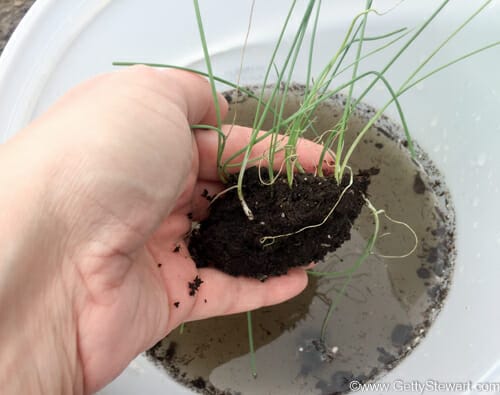 Dig Deep:
Dig Deep: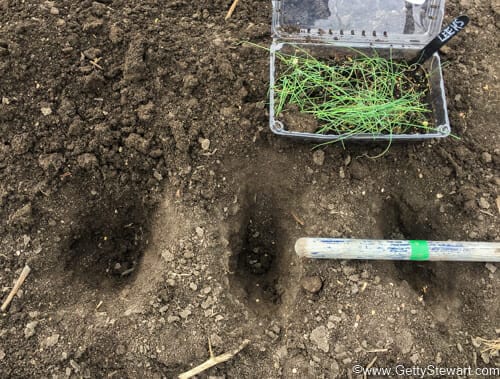


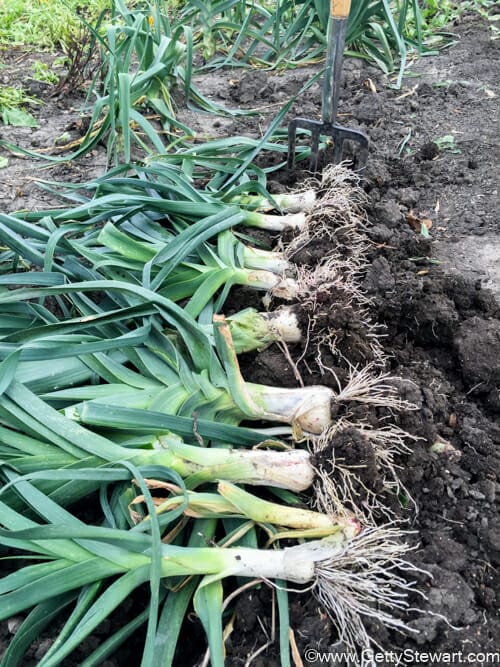

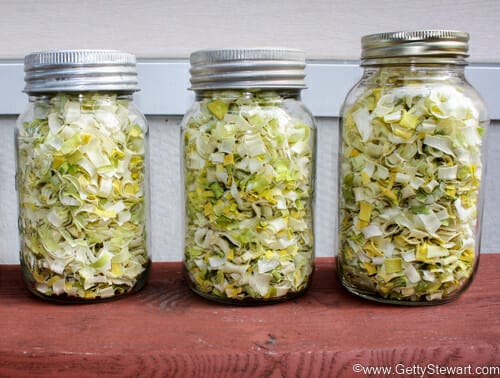
Great post! I love leeks. Leek seedings start the garden year weeks before any other plants get started. I am sitting here with a cup of tea, taking a break from potting up tiny seedlings, wondering why I can never get pencil size transplant together, making another stab at it. To trim or not to trim? To pot up or to thin? I loved your illustration of what you actually do.
Glad the article was useful. Due to travel, I started my leeks quite late last year and had super small seedlings when transplanting, I had to replant a few, but the majority came in just great. This year, I’ve got a good start on them. I will be trimming them to see if I can get them to bulk up a bit, but I’m not too worried about it. Like you, I think about thinning the seedlings but never get up the nerve to pull and toss them. Maybe it’s the slow, cool start that they get in our Manitoba spring, but once they get outside they seem to do great no matter what.
Good luck,
Getty
Good timing for this post! I’ve got some leek seedlings growing, but now I have to wait for the “blizzard” to pass before I can put them out in my raised beds (flat ground garden is still too wet). My usual way to preserve leeks for the winter is to clean, chop, saute, and freeze, but I love the idea of drying them – would certainly save on freezer space. As far as eating, we love whole or halved leeks that have been roasted along with other veggies. They get a crispy outside and a sweet, tender inside. Have you ever tried blanching leeks with toilet paper tubes or something like that? It’s a hint I read somewhere, and I’ve been thinking about trying it.